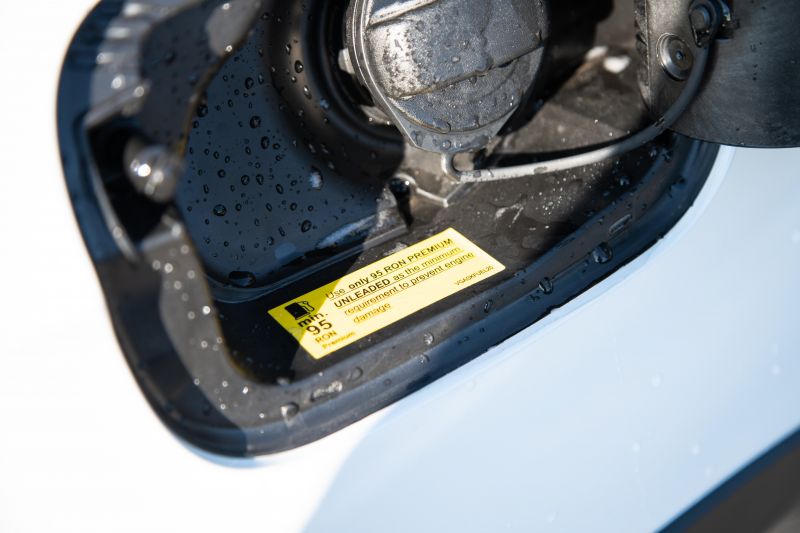RON. This acronym is seen everywhere, from the local service station to articles and car reviews.
It’s short for Research Octane Number, a measure of the petrol’s octane rating. In Australia, octane ratings top out at 98 for premium unleaded, before stepping down to 95 premium unleaded, E10 (94 octane), and standard 91 octane unleaded. United fuels also offers an E85 racing blend rated at 107 RON.
What’s the octane rating? As discussed earlier, it describes a fuel’s ability to resist premature detonation – which causes engine knock. The term originates from the knocking sound engines make if their fuel detonates too early, before the spark plug has fired to ignite it.
Knock also relates to the engine’s compression ratio. A standard internal-combustion engine has several cylinders, each with a piston.
The compression ratio describes the volume of the cylinder when the piston is at the bottom of its stroke (bottom dead centre, or BDC) as compared to the top of its stroke (top dead centre, or TDC). If the volume at BDC is 10 times that at TDC, then the engine’s compression ratio would be 10:1.
Engines with higher compression ratios tend to have a greater thermal efficiency, which in the simplest terms means they produce more power and deliver better fuel economy compared to their low-compression counterparts, assuming all else is the same.
Fuel with a higher RON combusts at hotter temperatures and under greater pressures. This makes it appropriate for these high compression ratio engines as, by not burning before the piston reaches TDC, risk of knock is alleviated.
In Australia, this is the main reason 98 RON unleaded is branded as premium. Not only is it the most expensive petrol a consumer can buy from the bowser, it has the greatest knock resistance.
95 premium unleaded, E10 and standard 91 unleaded have a lower knock resistance. In a high-compression ratio engine, they can produce less power and reduce fuel economy.
Does my car need high RON premium unleaded?
A general rule of thumb is that older cars will happily accept anything from standard 91 unleaded all the way up to premium 98 octane petrol. Newer cars with high compression ratio engines, especially those with turbocharged engines found on many European marques, strongly prefer 95 or 98 octane premium unleaded.
It’s important to note cars today have electronic fuel injection systems (EFI). These contain sensors that can detect if engine knock is occurring.
If this is the case, the system can adjust the spark ignition timing to prevent it from re-occurring. However, this can come at the cost of power and fuel economy.
What does all of this mean? In an emergency where premium unleaded might not be available, in some cases it’s okay to fill a car with standard petrol. The safest bet remains to follow manufacturer guidelines and recommendations to ensure the car’s longevity, and make sure its performance and fuel economy are maximised.
Keep a look out, however, for cars in Australia that are equipped with petrol particulate filters (PPFs). These are filters that reduce harmful emissions and air pollution by trapping pollutants such as soot.
Vehicles equipped with PPFs may only be capable of running on higher octane fuel, at risk of serious damage to the engine and exhaust system.
Does premium fuel clean a car’s engine – and is this necessary?
In short, premium fuel may have the ability to clean an engine, but it’s definitely not a necessity.
Fuel companies such as Shell, Caltex and others often tout this cleaning ability as a unique advantage of 98 premium unleaded, however vehicles today are already equipped with fuel filters to keep out any impurities that can damage components such as the fuel injection system.
A better idea to ensure the engine remains clean and free of any possible carbon build-up would be to adhere to manufacturer recommended service intervals, and to go on the occasional longer road-trip that ensures the car’s engine reaches its ideal operating temperature for a sustained period of time.



